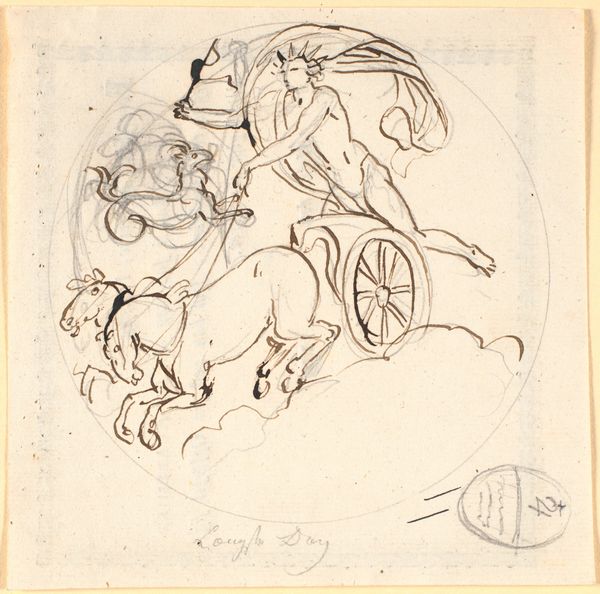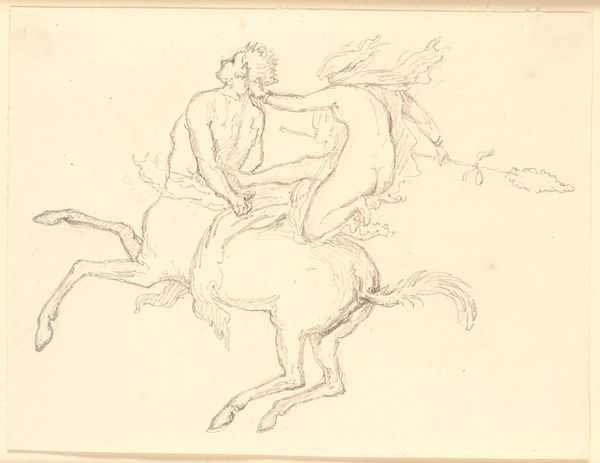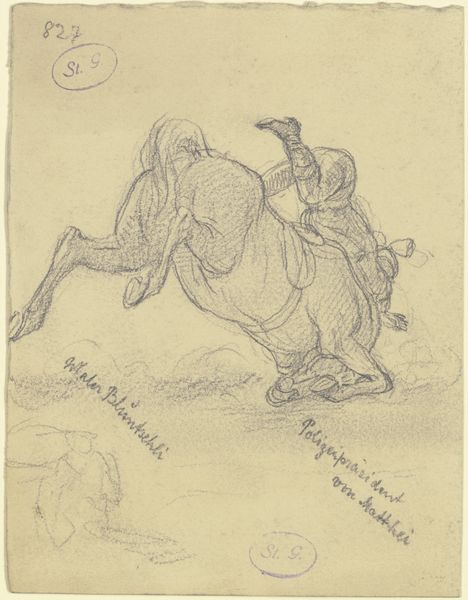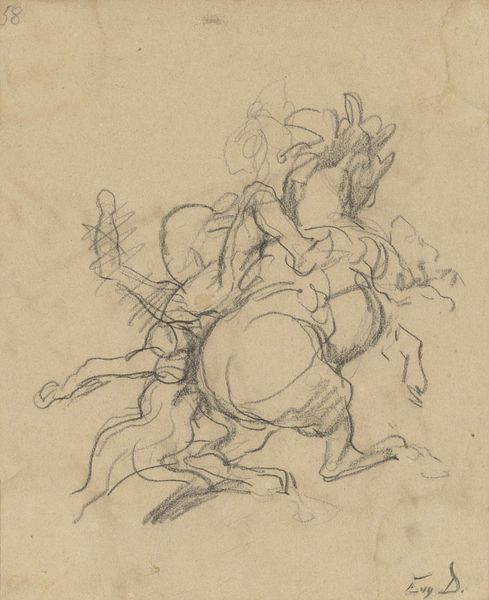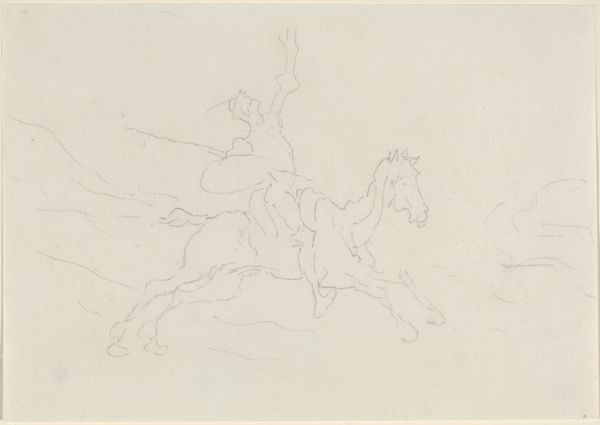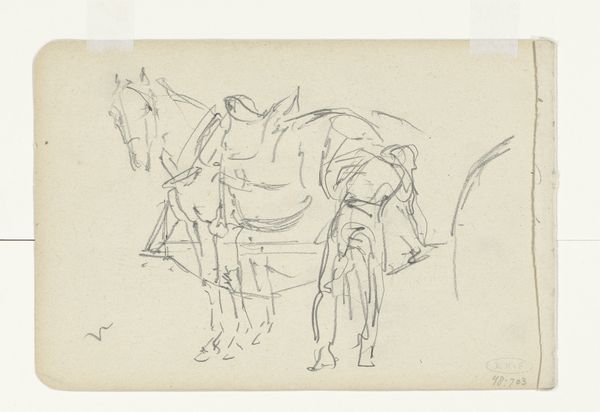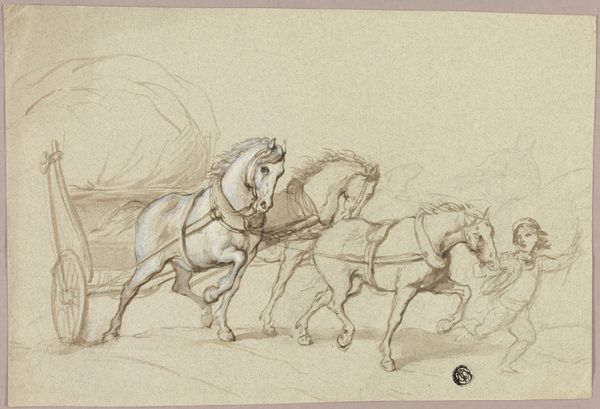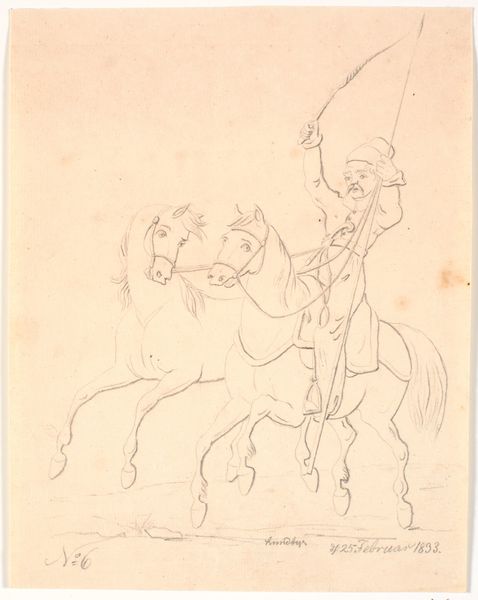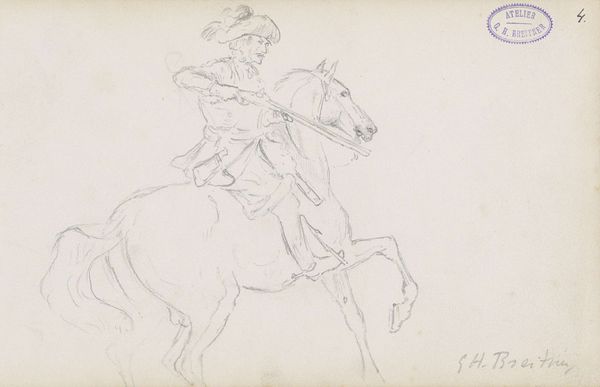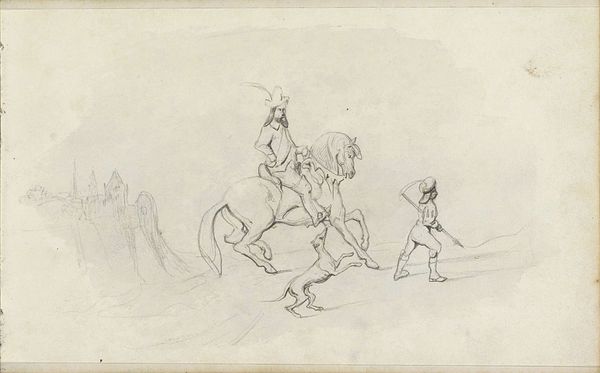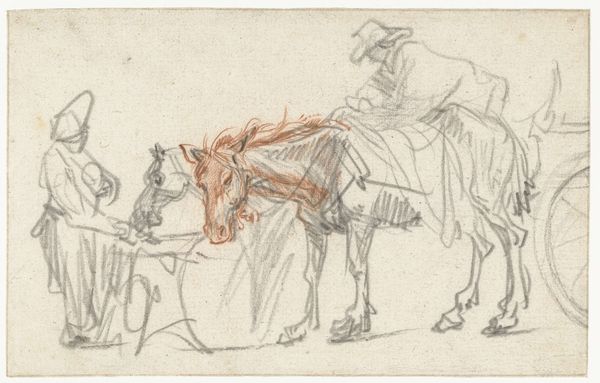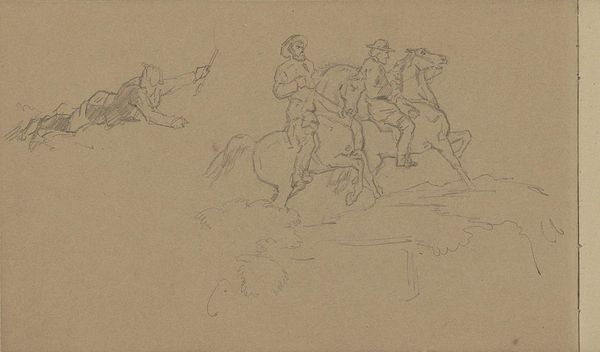
Pax triumphans. Danmarks genius med en Mercurstav i hånden standser krigsgudinden Biga 1743 - 1809
0:00
0:00
drawing, ink, pen
#
drawing
#
neoclacissism
#
ink drawing
#
allegory
#
pen sketch
#
ink
#
pen
#
history-painting
Dimensions: 183 mm (height) x 268 mm (width) (bladmaal)
Curator: Looking at this striking pen and ink drawing, titled "Pax triumphans. Danmarks genius med en Mercurstav i hånden standser krigsgudinden Biga", we see a work by Nicolai Abildgaard, likely created between 1743 and 1809. Editor: The stark contrast of the heavy ink lines against the pale paper immediately draws the eye. It feels almost frantic, yet the subject matter suggests a poised stillness. Curator: Precisely. The sketch explores an allegorical scene deeply rooted in the socio-political landscape of Denmark during that era. Abildgaard situates "Denmark's Genius", the embodiment of the nation, in a moment of asserting peace, using Mercury's staff to halt the war goddess Biga, advocating against war in a politically turbulent Europe. Editor: Let's consider that Mercury's staff – it represents commerce and negotiation. Its inclusion offers a sharp counterpoint to the dynamism, especially in the rendering of the horses; it brings a moment of stillness, and redirects the focus of conflict through a gesture of power and resolve. Curator: Absolutely, peace through trade—a compelling proposition rooted in Enlightenment ideals. Notice how Abildgaard uses the female form, positioning women in a context to highlight gender roles in society. He elevates the symbolic weight of “Denmark’s Genius” advocating peace—a conscious critique perhaps, of the masculine orientation of war? Editor: Yes, this symbolic depiction provides further narrative context for an ongoing discourse regarding conflict in this era. Moreover, the artist skillfully guides our view. I’m also thinking about his line work here; in his use of line, Abildgaard shows an awareness and a grasp for what line represents as form rather than boundary. Curator: Indeed. What strikes me is how Abildgaard merges classical allegory with immediate social commentary, rendering history not as a static narrative but as a stage for ongoing debates. The sketch prompts us to question what, precisely, defines ‘genius’ in a nation’s history—is it military might, or diplomatic wisdom? Editor: Abildgaard's sketch challenges us to actively deconstruct images as constructs, to see within each symbolic element a discourse—an entire tapestry woven of form and meaning. Curator: Thank you for contributing to such insightful and crucial analysis, I found the perspective extremely illuminating!
Comments
No comments
Be the first to comment and join the conversation on the ultimate creative platform.
